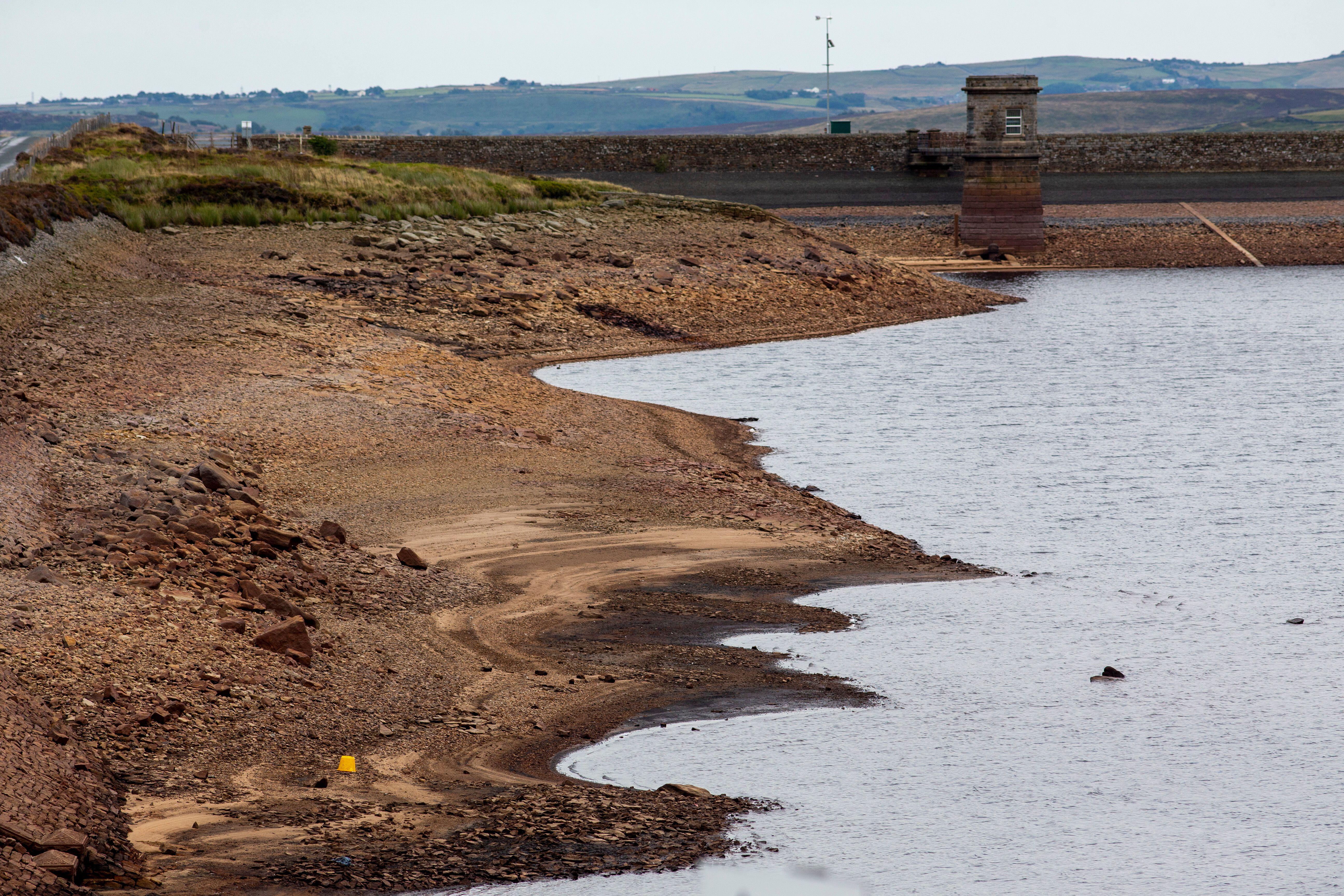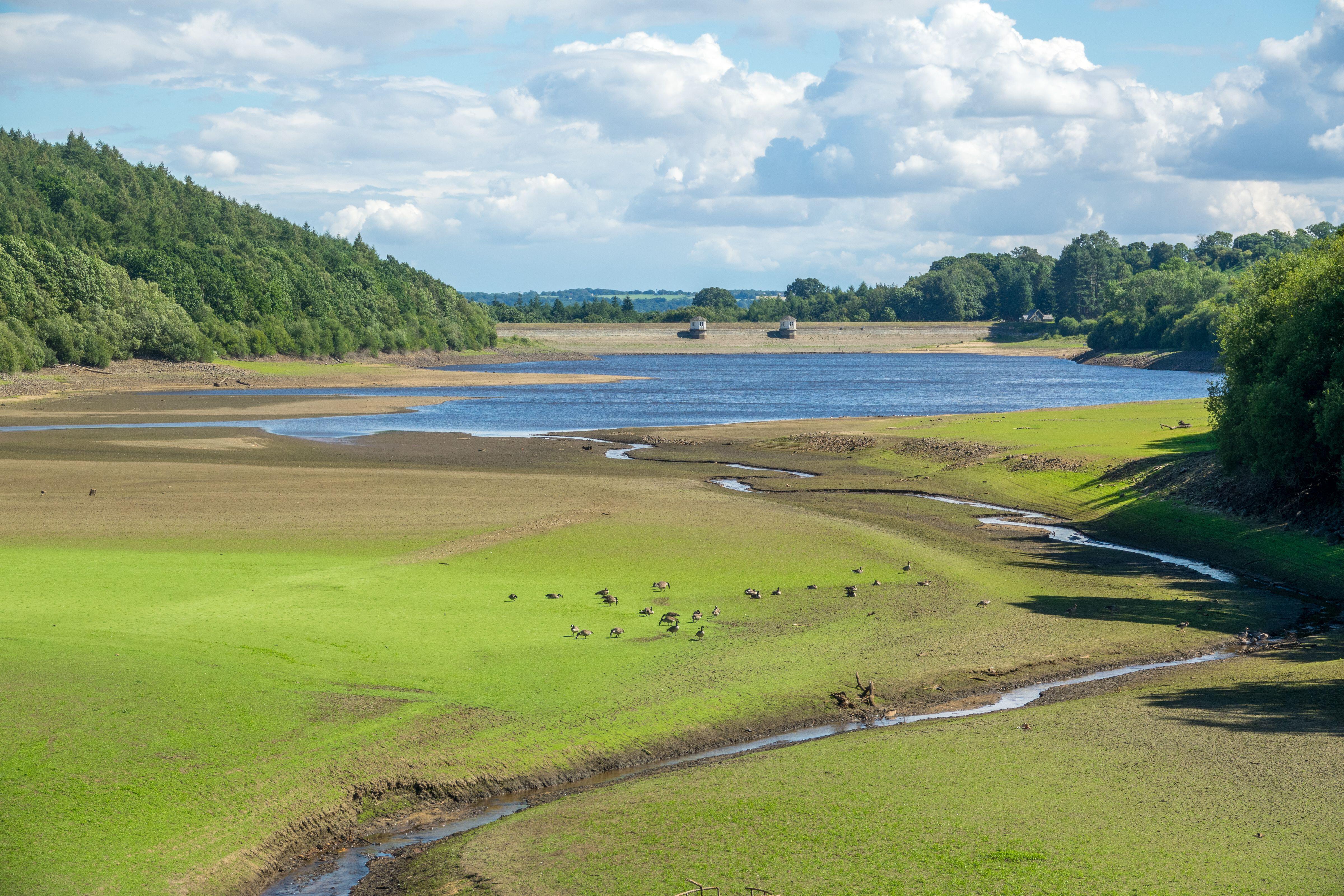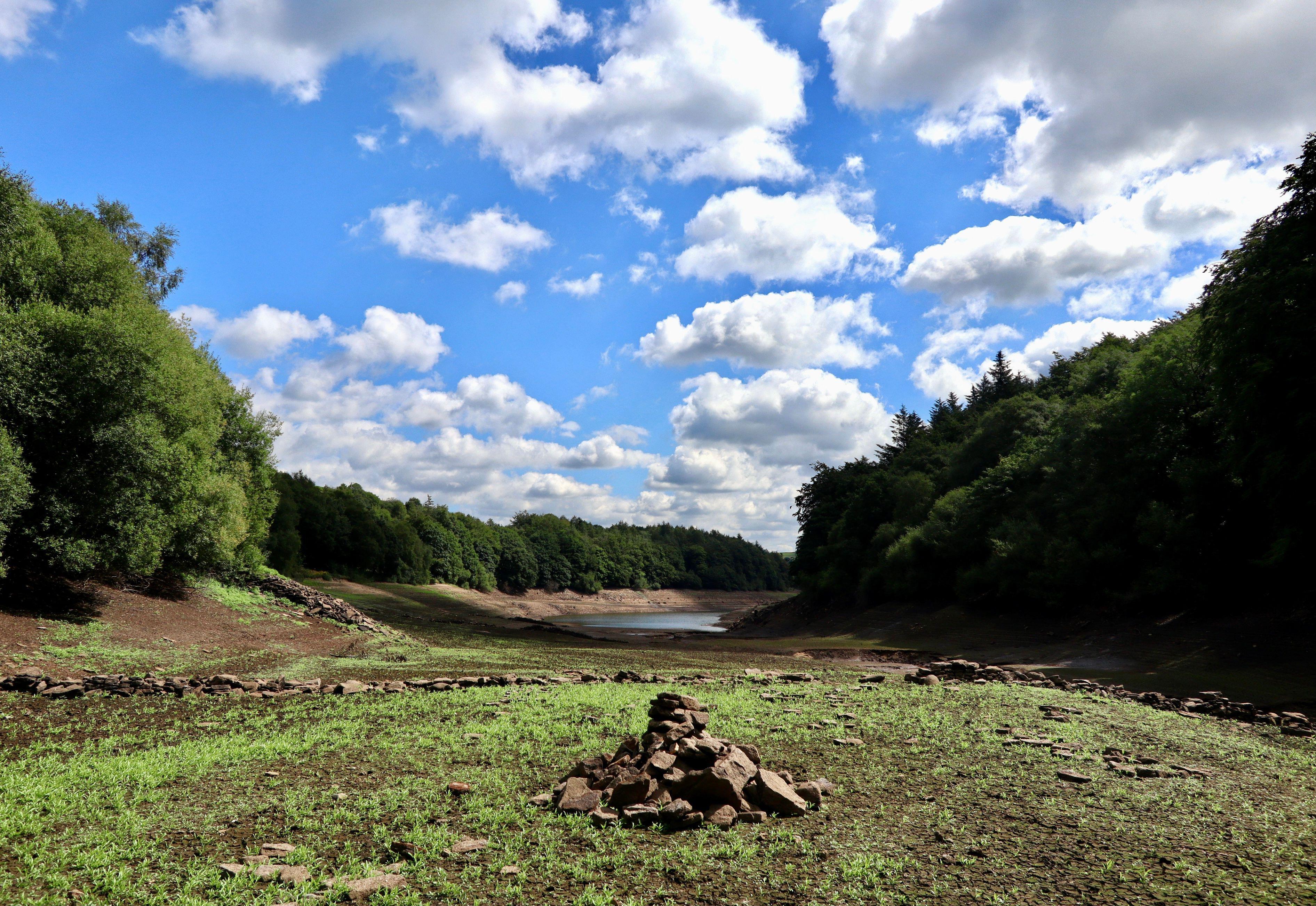
Four water companies have announced hosepipe bans in the UK as another heatwave scorches the country.
Thames Water was the latest to say it expects to implement a temporary usage ban (TUB) in the coming weeks due to the dry weather.
Here are each water company’s current guidelines concerning hosepipe bans and water usage across the UK, alongside water leakage statistics for those based in England and Wales:

– Anglian Water
Area: East of England and Hartlepool
Customers: Six million
Leakage per property per day in 2020/2021: 86 litres
A spokesman said: “We have no hosepipe bans currently in place across our region and we’re working hard to keep it that way, but we’re watching river levels very closely right now as things can change quickly and the forecast for this month remains dry and warm.”
– Welsh Water (Dwr Cymru)
Area: Most of Wales and parts of western England on the border with Wales
Customers: Three million
Leakage per property per day in 2020/2021: 116 litres
The company has introduced a hosepipe ban for customers in the region of Pembrokeshire and a small part of Carmarthenshire, which will come into effect on August 19.
The TUB will be in place “until we have had enough rain to replenish our water resources”.
– Hafren Dyfrdwy
Area: North-east and mid-Wales
Leakage per property per day in 2020/2021: 134 litres
The water provider does not currently have any restrictions in place but has not ruled out implementing “joint policies” along with the Welsh government should the situation with the dry weather worsen.
A spokesman said: “Whilst we don’t have any concerns about raw water position for Hafren Dyfrdwy, we continue to monitor the situation and are a part of the Welsh Government’s Taskforce, working closely with them to create joint policies and processes in the event of drought action.”

– Northumbrian Water
Customers: 2.7 million
Area: Northumberland, Tyne and Wear, Durham and parts of North Yorkshire
Leakage per property per day in 2020/2021: 110 litres
The website says there are “no plans in place to implement any drought measures such as hosepipe bans”, but adds it is “good practice” to use water wisely.
– Severn Trent Water
Area: From the Bristol Channel to the Humber and from mid-Wales to the East Midlands
Leakage per property per day in 2020/2021: 112 litres
The region covered by Severn Trent Water currently has no hosepipe bans in place.
However, the company said it will continue to monitor reservoir levels and demand for water “closely”, as it does every year, for any changes.
– South West Water
Area: Devon, Cornwall, parts of Dorset and Somerset
Customers: 1.7 million
Leakage per property per day in 2020/2021: 118 litres
South West water customers are at risk of “formal restrictions” being introduced over the coming weeks.
The last water restriction in the region was in 1996, but the company said on August 3 it may have to make the “difficult decision” to introduce restrictions “if the exceptional levels of demand and sustained dry weather continues”.
– Southern Water
Area: The south-west of England, including Dorset, Somerset, Bristol, most of Wiltshire and parts of Gloucestershire and Hampshire
Customers: 2.5 million
Leakage per property per day in 2020/2021: 87 litres
A hosepipe ban has been in place for customers in Hampshire and on the Isle of Wight since August 5.
The company has applied for a Drought Permit on the River Test from the Environment Agency to allow them to continue to “take water if levels continue to drop”.
– Thames Water
Area: London and the Thames Valley
Customers: 15 million
Leakage per property per day in 2020/2021: 161 litres
Thames Water said: Our reservoir stocks have dropped below 50%, which is 20% lower than normal for this time of year, and river levels remain low due to the lack of rain we’ve seen in our region.
“With those things in mind, we’re carefully reviewing our current and future position, taking into account the forecast for further high temperatures and little rainfall in the region.
“As a result, temporary use bans and drought permits are the options we’re considering.”
– United Utilities
Area: The North West in a region from Crewe to Carlisle
Customers: More than three million
Leakage per property per day in 2020/2021: 130 litres
A company spokesman told the PA news agency it is “not considering any restrictions on use” of water at present but did encourage customers to use water wisely.
– Wessex Water
Area: The South West including Dorset, Somerset, Bristol, and parts of Wiltshire, Gloucestershire and Hampshire
Customers: 2.8 million
Leakage per property per day in 2020/2021: 111 litres
No hosepipe bans are planned by Wessex Water but the company does warn that reservoir and groundwater levels are low and urges customers to “use water responsibly”.
– Yorkshire Water
Area: West Yorkshire, South Yorkshire, the East Riding of Yorkshire, part of North Lincolnshire, most of North Yorkshire and part of Derbyshire
Customers: More than five million
Leakage per property per day in 2020/2021: 130 litres
A spokesman said: “We haven’t applied for any drought orders or implemented TUBs. They do both form part of our drought plan and so they are tools that we could call on if/when we need to.”
On its website, the firm said there is not currently a hosepipe ban in place but it “can never rule it out. It’s been a really dry year, so we all need to save water where we can.”
– Affinity Water
Area: Bedfordshire, Berkshire, Buckinghamshire, Essex, Hertfordshire, Surrey and other parts of the South East
Customers: 3.83 million
Leakage per property per day in 2020/2021: 120 litres
Parts of the South East covered by Affinity Water are “unlikely” to see any hosepipe ban this year.
The company’s website says: “At current levels, it’s unlikely we’ll need to introduce restrictions this year.”
– Bristol Water
Area: Bristol city, north east Somerset and south Gloucestershire
Customers: More than 500,000
Leakage per property per day in 2020/2021: 69 litres
At the end of July, the company said: “We will continue to monitor the situation, but with our current water resource outlook we do not foresee any issues in supply to customers.”
– Portsmouth Water
Area: Portsmouth and the surrounding area
Customers: 698,000
Leakage per property per day in 2020/2021: 79 litres
Despite Southern Water issuing a temporary usage ban for nearby Hampshire and the Isle of Wight, Portsmouth Water reassured customers on Twitter on Tuesday “there is no hosepipe ban in the Portsmouth Water area of supply”.
It added: “But please, please, please use water responsibly! We’re all in this together.”

– South East Water
Area: The south-east of England, including Eastbourne, Maidenhead and North Kent
Customers: 2.2 million
Leakage per property per day in 2020/2021: 99 litres
A hosepipe ban will come into force on Friday for customers in Kent and Sussex.
The company announced: “We have been left with no choice but to restrict the use of hosepipes and sprinklers from 12.01am on Friday August 12 within our Kent and Sussex supply area until further notice.”
On its website, South East Water said: “We are taking this step to ensure we have enough water for both essential use and to protect the environment.
“This will enable us to also reduce the amount of water we need to take from already stressed local water sources.”
– South Staffs Water
Area: West Midlands, South Staffordshire, South Derbyshire, North Warwickshire and North Worcestershire
Customers: 1.3 million
Leakage per property per day in 2020/2021: 111 litres
Head of water strategy and environment Natalie Akroyd said: “With the recent hot weather and less-than-average rainfall for this time of year, we continue to monitor our water resources and encourage our customers to use water wisely.
“We currently don’t have any plans in place to introduce hosepipe bans.”
– SES Water
Area: Parts of Surrey, Kent and south London
Customers: 745,000
Leakage per property per day in 2020/2021: 82 litres
SES Water wholesale director Tom Kelly said: “The prolonged dry weather, coupled with higher demand for water, continues to affect our levels of resources, which are less than we’d expect for this time of year.
“85% of our supplies come from groundwater resources, which is water stored in aquifers underground, and the remaining 15% is abstracted from rivers into our Bough Beech reservoir in Kent.
“These resources are refilled by rainwater between October to April and so, unlike some other water companies, we don’t rely on summer rainfall to replenish.
“We’ll be monitoring rainfall levels during the winter months, as that’s when our groundwater sources refill, in case restrictions need to be brought in next spring.

“While they have still been affected by the dry weather, it’s the increase in demand for water that’s the main cause for the decline in water resource levels.
“Customers playing their part to save water is helping us from having to introduce restrictions.
“We continue to closely monitor our resources on a daily basis and won’t rule out bringing in a hosepipe ban if we feel it is required.
“In the meantime, we’re asking customers to keep using water responsibly, as we play our part to keep leakage as low as we can, and together we can make sure there’s enough for everyone this summer.”
– Scottish Water
A Scottish Water spokesman told PA there were no plans for water usage restrictions in Scotland.
He added: “We are monitoring and managing our water resources and, in some instances, reservoirs are being topped up from alternative water sources to ensure supply resilience for customers.”
– Northern Ireland Water
A spokesman for Northern Ireland Water said: “The amount of water in our impounding reservoirs is kept under continuous review and we are content with our current level of storage. However, it is imperative that customers continue to use water wisely, especially given the forecast for the next number of days.
“At this point in time, NI Water is not introducing a hosepipe ban. The situation is, however, being closely monitored and if storage reduces significantly or demand became excessive, NI Water would have to consider the possibility of putting in place measures in order to protect water supplies.”
Water leakage information was compiled by the information dashboard Discover Water and is based on information agreed by water companies, the water regulators, the UK and Welsh Governments and the Consumer Council for Water.







